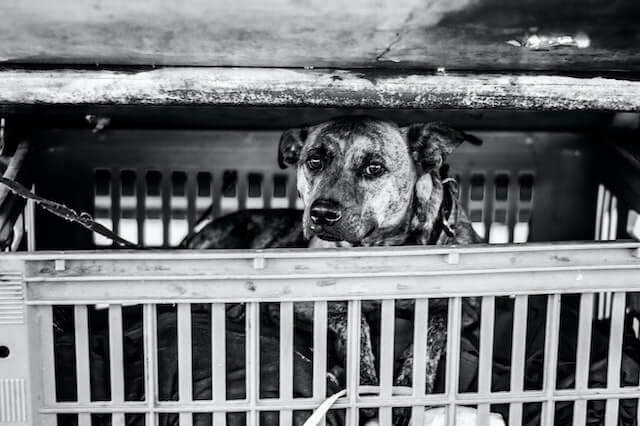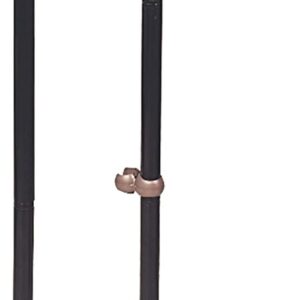11 Best Potty Training Techniques For Your Young Dog

Potty training a young dog can be a challenging task, but it is an important part of their development. It requires patience, consistency, and a willingness to try different techniques until you find what works best for your pup.
The good news is that there are several effective potty training techniques that can help your young dog learn to do their business outside, saving you from the mess and stress of indoor accidents. We will explore eleven of the best potty training techniques for your young dog.
Potty Training Techniques
1) Crate Training
Crate training is a popular and effective method for potty training young dogs. Dogs are naturally clean animals, and they do not like to soil their living space. By confining your pup to a crate, you can teach them to hold their bladder and bowels until you take them outside. However, it is important to note that crate training should not be used as a punishment, and your pup should never be left in their crate for extended periods.
To begin crate training, choose a crate that is just big enough for your pup to stand up, turn around, and lie down comfortably. Place a comfortable bed or blanket inside the crate to make it inviting for your pup. Feed your pup inside the crate and leave the door open so they can explore it on their own.

When it is time for your pup to go outside, take them out of the crate and immediately take them outside. Praise your pup and give them a treat if they do their business outside. If they do not go, put them back in the crate and try again in a few minutes. With consistency and patience, your pup will learn to associate the crate with their sleeping and resting space and will hold their bladder and bowels until you take them outside.
2) Regular Feeding Schedule
Establishing a regular feeding schedule is an important part of potty training your young dog. By feeding your pup at the same time every day, you can establish a regular schedule for their bowel movements. This will make it easier for you to anticipate when your pup needs to go outside.
When feeding your pup, do not leave their food out for them to graze on throughout the day. Instead, feed them at specific times and take away their food after 15-20 minutes, whether they have finished or not. This will help regulate their digestion and make it easier for you to predict when they need to go outside.
3) Positive Reinforcement
Positive reinforcement is a powerful tool for potty training young dogs. Dogs respond well to praise and rewards, and positive reinforcement can help them learn the desired behavior quickly and effectively.

When your pup goes outside to do their business, praise them enthusiastically and give them a treat. This will help them associate going outside with positive experiences and will encourage them to repeat the behavior. If your pup has an accident inside, do not punish them. Instead, clean up the mess and take them outside immediately. When they do go outside, praise and reward them as usual.
4) Consistent Commands
Consistent commands are an important part of potty training your young dog. Use the same command every time you take your pup outside to do their business, such as “go potty” or “do your business.” Your pup will learn to associate the command with the desired behavior and will be more likely to comply.
When your pup does go outside, praise and reward them immediately. This will help them understand that they have done something right and will encourage them to repeat the behavior in the future.
5) Leash Training
Leash training is another effective method for potty training young dogs. By keeping your pup on a leash, you can control their movements and prevent them from wandering off or getting distracted while outside.
To begin leash training, put your pup on a leash and take them outside to their designated potty area. Use the consistent command you have established, and wait for your pup to do their business. If they do not go after a few minutes, take them back inside and try again in a few minutes.
When your pup does go, praise and reward them immediately. Repeat this process every time you take your pup outside, and they will quickly learn that going outside on a leash means it is time to do their business.
6) Bell Training
Bell training is a unique and effective method for potty training young dogs. By hanging a bell on the door handle or near the door, you can teach your pup to signal when they need to go outside.
To begin bell training, hang a bell on the door and encourage your pup to ring it by gently tapping it with their nose or paw. When your pup rings the bell, immediately take them outside to their designated potty area. Praise and reward them when they do their business outside.
Check out the Mighty Paw Smart Bell 2.0, Dog Doorbell for Potty Communication
With consistent training, your pup will learn to associate ringing the bell with going outside to do their business. This method can be especially helpful for young pups who may not be able to hold their bladder or bowels for long periods.
7) Keep a Journal
Keeping a journal can be a helpful tool for potty training your young dog. By tracking your pup’s eating and drinking habits, as well as their bowel movements and accidents, you can identify patterns and adjust your training accordingly.
In your journal, record the time and amount of food and water your pup consumes, as well as the times they go outside and whether they do their business. This will help you anticipate when your pup needs to go outside and make adjustments to their feeding and potty schedule as needed.
8) Supervision
Supervision is an important part of potty training your young dog. When your pup is not in their crate, keep a close eye on them and do not allow them to wander off unsupervised. This will prevent accidents inside and will also give you the opportunity to praise and reward your pup when they do the right thing.
If you cannot supervise your pup, confine them to a small, puppy-proofed area such as a playpen or gated off room. This will prevent them from getting into trouble and will also help them develop good habits.
9) Clean Up Accidents Properly
Accidents are bound to happen during the potty training process, and it is important to clean them up properly to prevent your pup from returning to the same spot. Use an enzymatic cleaner specifically designed for pet messes, and thoroughly clean and disinfect the area.
Check out Potty Here Training Aid Spray
Avoid using ammonia-based cleaners, as the scent can resemble that of urine and may attract your pup back to the same spot. Instead, use a cleaner that will eliminate all traces of the mess and the scent.
10) Patience and Consistency
Potty training a young dog requires patience and consistency. It is important to stick to a regular schedule and training routine, and to be patient with your pup as they learn the desired behavior.
Remember that accidents are normal and are part of the learning process. Stay consistent with your training and praise and reward your pup for good behavior, and they will eventually learn to do their business outside.
11) Seek Professional Help
If you have tried several potty training techniques and your pup is still having frequent accidents inside, it may be time to seek professional help. A professional dog trainer can assess your pup’s behavior and provide customized training techniques to help them learn the desired behavior.

It is important to remember that every pup is different, and what works for one may not work for another. Be patient, consistent, and willing to try different techniques until you find what works best for your young dog.
Conclusion
Potty training your young dog is an important part of their early training and development. By using a combination of techniques such as crate training, positive reinforcement, frequent potty breaks, leash training, bell training, journaling, supervision, proper clean-up, patience, and consistency, you can help your pup learn to do their business outside and develop good habits.
Remember that potty training takes time and patience, and accidents are bound to happen. But with consistent training and positive reinforcement, your pup will eventually learn to do the right thing.
It is also important to remember that every dog is different, and what works for one may not work for another. Be patient, consistent, and willing to adjust your training techniques as needed to find what works best for your pup.
With the right training and plenty of love and patience, your young dog will soon be a well-behaved and house-trained member of your family.
Disclaimer: This article may contain affiliate links to products. All product details reflect the price and availability at the time of publication. We may receive a commission for purchases made through these links.



